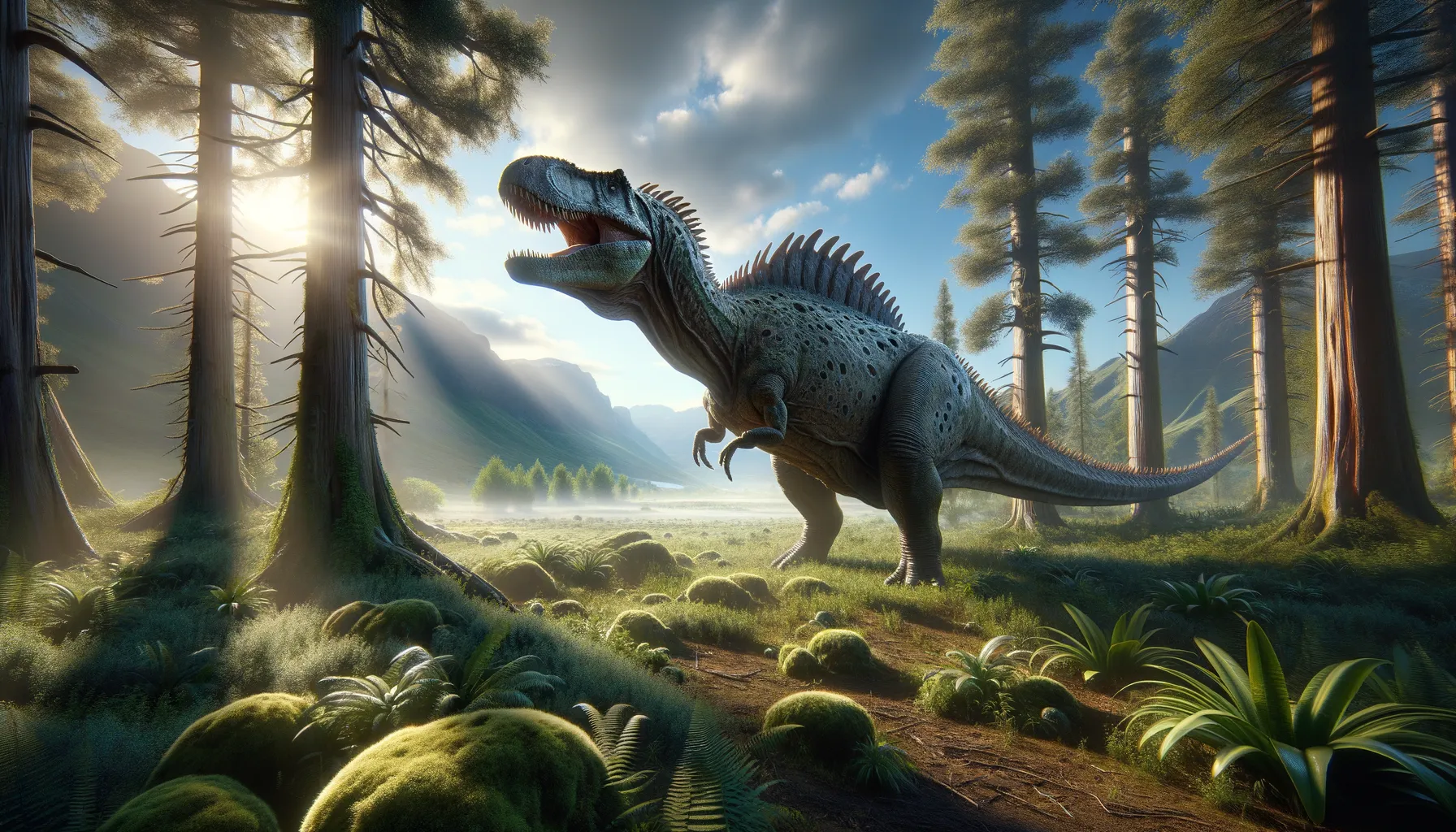
Anodontosaurus
A gentle giant clad in bony armor.
Period
Cretaceous
Length
Around 6 meters in length.
Height
Approximately 1.5 meters tall.
Weight
Weighed about 3 tons.
Anodontosaurus was a heavily armored dinosaur that thrived during the Cretaceous period. Its body was covered with bony plates, providing it with protection against predators. This herbivorous creature roamed the ancient landscapes of what is now North America, dining on the lush vegetation of its time. Despite its formidable appearance, Anodontosaurus was a gentle giant in its ecosystem, relying on its armor for defense rather than speed or agility.
Diet
Anodontosaurus was an herbivore, feeding mainly on low-lying plants. Its strong jaws and teeth were effective for grinding vegetation. Adapted to a plant-based diet, it would likely have grazed peacefully amid Cretaceous flora.
Hunting
Anodontosaurus did not hunt as it was a herbivore. Instead, it foraged for plants, moving slowly due to its heavy armor. By grazing on abundant vegetation, it played a role in maintaining its habitat's plant life balance.
Environmental challenges
During its existence, Anodontosaurus faced environmental challenges such as climate fluctuations and habitat changes. These dinosaurs needed to adapt to the varying availability of food sources. Their armored bodies helped them fend off predators in a dynamic ecosystem where survival strategies were crucial. As the Cretaceous period ended, they encountered significant changes that eventually led to their decline.
Speed
Slow-moving due to its heavy armor.
Lifespan
Estimated to live several decades.
First discovery
Discovered in the late 20th century in Canada.
Fun Facts
- Anodontosaurus was a heavily armored dinosaur that lived around 70 million years ago during the Late Cretaceous period.
- Unlike many dinosaurs, Anodontosaurus did not have teeth in its beak, hence its name which means 'toothless lizard'.
- This dinosaur was herbivorous, meaning it only ate plants, using its beak to cut through tough vegetation.
- Anodontosaurus had a tail club, which it likely used to defend itself against predators.
- The first Anodontosaurus fossil was discovered in Alberta, Canada in the early 20th century.
- Anodontosaurus is part of the ankylosaurid family, which is famous for its armored plates and tail clubs.
- Despite its armor, Anodontosaurus was likely a slow mover, relying on its defenses rather than speed to survive.
Growth and Development
Anodontosaurus grew slowly but steadily, with its bony armor developing as a defense mechanism against predators. Juveniles likely remained close to family groups for protection. Over time, their limbs and body structure grew robust, supporting their weight. Reaching full maturity took several years, during which they acquired the skills needed to navigate and forage in their environment.
Habitat
Anodontosaurus lived in what is now North America, primarily in areas with lush vegetation. Its habitat included woodlands and floodplains, abundant in plant life. These environments provided adequate food sources and shelter from predators. Seasonal changes in the Cretaceous period influenced the distribution of its habitat.
Interaction with other species
Anodontosaurus interacted with both herbivores and carnivores within its ecosystem. Its primary threat came from large predatory dinosaurs. Nevertheless, its armor provided substantial protection. Socially, Anodontosaurus might have formed small groups or lived a solitary life, avoiding conflict when possible.
Natural lifespan
Anodontosaurus had a natural lifespan that could span several decades.
Reproduction
Reproduction likely involved laying eggs, as seen in other dinosaurs. Nesting sites would have been strategically chosen in safe, secluded areas. Parental care could have included guarding eggs or hatchlings from predators. Young Anodontosaurus would need time to develop their protective armor fully.
Social behaviour
The social behavior of Anodontosaurus may have included forming loose groups for protection. Communication within groups could involve visual signals, especially when sensing danger. Although primarily solitary, they would gather during breeding seasons or in specific feeding areas. Their interactions would be focused on survival and resource sharing.
Fossil locations
Fossils of Anodontosaurus have predominantly been found in Canada, particularly in Alberta. These findings have been crucial for understanding the distribution and lifestyle of this armored dinosaur. The fossils are often well-preserved, providing valuable insights into its physical characteristics. Ongoing excavations continue to reveal more about its existence millions of years ago.
